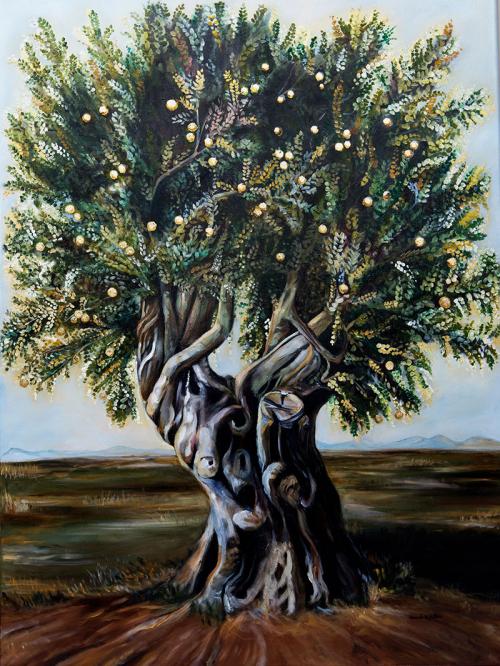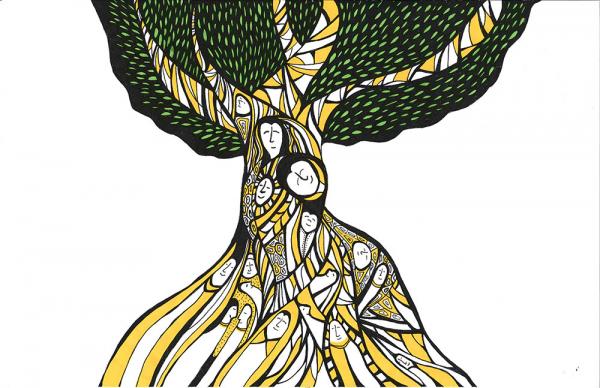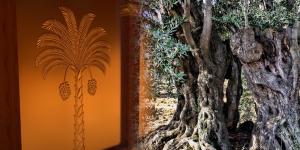You are here
Was Lehi Familiar with Zenos’s Allegory of the Olive Tree?

1 Nephi 10:12
The Know
When Nephi summarized his father’s prophecies in 1 Nephi 10, he included Lehi’s teaching that the house of Israel “should be compared like unto an olive tree, whose branches should be broken off and should be scattered upon all the face of the earth” (v. 12). Lehi also understood that Israel’s future gathering was related to the same olive tree imagery. He taught that after being scattered, “the natural branches of the olive tree, or the remnants of the house of Israel, should be grafted in, or come to the knowledge of the true Messiah, their Lord and their Redeemer” (v. 14).
Readers familiar with Jacob 5 will probably recognize that Lehi’s teachings relate to Zenos’s allegory of the olive tree, which was eventually recorded onto the small plates by Lehi’s son, Jacob.1 What may not be so immediately obvious, though, is that Lehi’s comments provide an inspired interpretation and application of Zenos’s allegory. According to Noel B. Reynolds,
Lehi connects the breaking off of the branches to dwindling in unbelief and interprets the scattering of the branches in Zenos’s allegory to mean, in part, that “we should be led with one accord into the land of promise, unto the fulfilling of the word of the Lord, that we should be scattered upon all the face of the earth” (v. 13). He interprets the grafting of the natural branches back into the olive tree as regaining knowledge of Christ.2
The Tree of Life by Hannah Butler
Readers should also be aware that Lehi’s teachings about the olive tree follow soon after his dream of the Tree of Life. This close proximity is significant because, as John A. Tvedtnes has argued, it provides “evidence that Lehi’s vision of the tree of life is related to the parable of Zenos.”3 Supporting this claim is the fact that Nephi’s brothers seemed to link the two trees together as related symbols when they asked about their father’s teachings.4
Further evidence of Lehi’s dependence upon Zenos’s allegory comes from his final blessings upon his posterity. Declaring the word of the Lord, Lehi prophesied, “Inasmuch as ye shall keep my commandments ye shall prosper in the land; but inasmuch as ye will not keep my commandments ye shall be cut off from my presence” (2 Nephi 1:20). Reynolds has seen this as a reflection of the “alternate cycles of productive growth and pruning of the Zenos allegory.”5
Lehi’s blessing and curse was specifically related to his people’s promised land, which he described as being “choice above all other lands” (2 Nephi 1:5). This phrase correlates with the “spot of ground” in Jacob 5:43, which the Lord of the vineyard described as being “choice unto me above all other parts of the land of my vineyard.”
What Could I Have Done More For My Vineyard by Sammie Dockstader
In Jacob 5:40, readers learn that the wild fruit of this choice ground would eventually “overcome that part of the tree which brought forth good fruit, even that the branch had withered away and died.” Lehi seems to have understood that this this was a prophecy about his own posterity, specifically about how the seed of the Lamanites would eventually overcome the seed of the once-righteous Nephites.
In agreement with Zenos’s allegory on this point, Lehi blessed the posterity of Laman and Lemuel so that even if they were cursed, they would “not utterly be destroyed” (v. 9) and that instead their curse would be taken from them and “answered upon the heads of [their] parents” (v. 6). Lehi’s prophecy can help readers understand why the wild branches (Lamanites) were allowed to overcome the good branches (Nephites) in Zenos’s allegory. It was because the Nephites had knowingly sinned against light and truth while the Lamanites were less spiritually accountable because of the wicked traditions of their forefathers.6
The Why
Although it is never directly stated, Lehi’s teachings and prophecies show a consistent awareness of Zenos’s allegory of the olive tree. This makes a lot of sense, considering that Zenos’s allegory seems to have been known to Old Testament prophets as well.7 It also helps explain why other Book of Mormon prophets—such as Nephi, Jacob, Alma, and Mormon—all valued Zenos’s teachings.8 In doing so, they were following the example of Lehi, their founding patriarch.
The Olive Tree by Hannah Allen
The allegory of the olive tree concerns the past history and future destiny of the house of Israel.9 This means that, like Lehi, readers today can find their own place in the allegory. Just as Lehi saw that part of his posterity would be overrun, he also knew that in the last days, Israel would be gathered together again. And we are invited to participate in this gathering. Speaking to the youth, President Russell M. Nelson has explained,
The Lord told the Prophet Joseph Smith that now, meaning our day, is the eleventh hour and the last time that He will call laborers into His vineyard for the express purpose of gathering the elect from the four quarters of the earth. … Would you like to be a big part of the greatest challenge, the greatest cause, and the greatest work on earth today?10
No matter our age, we can contribute to this gathering and bring forth good fruit by living righteously and inviting others to come unto Christ. As we do so, we will have “joy in the fruit” of our labors, as prophesied in Jacob 5:71. Participating in this monumental gathering is a unique privilege because it helps prepare the world for Jesus Christ’s Second Coming. At the same time, it fulfills the hopes and desires of all the holy prophets, like Zenos and Lehi, who foresaw that the restoration of Israel would take place in our day.
Further Reading
Noel B. Reynolds, “Nephite Uses and Interpretations of Zenos,” in The Allegory of the Olive Tree: The Olive, The Bible, and Jacob 5, ed. Stephen D. Ricks and John W. Welch (Salt Lake City and Provo, UT: Deseret Book and FARMS, 1994), 21–49.
David Rolph Seely and John W. Welch, “Zenos and the Texts of the Old Testament,” in The Allegory of the Olive Tree: The Olive, the Bible, and Jacob 5, ed. Stephen D. Ricks and John W. Welch (Salt Lake City and Provo, UT: Deseret Book and FARMS, 1994), 322—346.
John A. Tvedtnes, “Borrowings from the Parables of Zenos,” in The Allegory of the Olive Tree: The Olive, The Bible, and Jacob 5, ed. Stephen D. Ricks and John W. Welch (Salt Lake City and Provo, UT: Deseret Book and FARMS, 1994), 373–426.
- 1. See Book of Mormon Central, “Why Did Jacob Share the Allegory of the Olive Tree? (Jacob 4:17),” KnoWhy 66 (March 30, 2016).
- 2. Noel B. Reynolds, “Nephite Uses and Interpretations of Zenos,” in The Allegory of the Olive Tree: The Olive, The Bible, and Jacob 5, ed. Stephen D. Ricks and John W. Welch (Salt Lake City and Provo, UT: Deseret Book and FARMS, 1994), 23.
- 3. John A. Tvedtnes, “Borrowings from the Parables of Zenos,” in The Allegory of the Olive Tree, 375.
- 4. When inquiring after the meaning of their father’s prophecies, Nephi’s brothers first asked about the olive tree symbolism from their father’s teachings (1 Nephi 15:7). They then immediately asked about the symbolism of the other tree which Lehi saw, which Nephi explained was a symbol of the Tree of Life (1 Nephi 15:21–22). For a visual comparison of the symbolism inherent in these trees, see John W. Welch and J. Gregory Welch, Charting the Book of Mormon: Visual Aids for Personal Study and Teaching (Provo, UT: FARMS, 1999), chart 95.
- 5. Reynolds, “Nephite Uses and Interpretations of Zenos,” 25.
- 6. See also, Alma 9:19; Alma 24:30; Helaman 7:24.
- 7. See Tvedtnes, “Borrowings from the Parables of Zenos,” 373–426; Book of Mormon Central, “Did Prophets Such as Ezekiel Know the Writings of Zenos? (Jacob 5:24),” KnoWhy 440 (June 12, 2018).
- 8. See 1 Nephi 19:10–17; Jacob 5:1–77; 6:1; Alma 33:3–11, 13, 15; 34:7; Helaman 8:19–20; Helaman 15:11; 3 Nephi 10:14–17.
- 9. See Joseph Fielding Smith, “Who Were the Prophets Zenos and Zenock?” Improvement Era 66 (March 1963): 158–59.
- 10. Russell M. Nelson, “Hope of Israel,” Worldwide Youth Devotional, June 3, 2018, online at lds.org
KnoWhy Citation
Related KnoWhys
Subscribe
Get the latest updates on Book of Mormon topics and research for free








